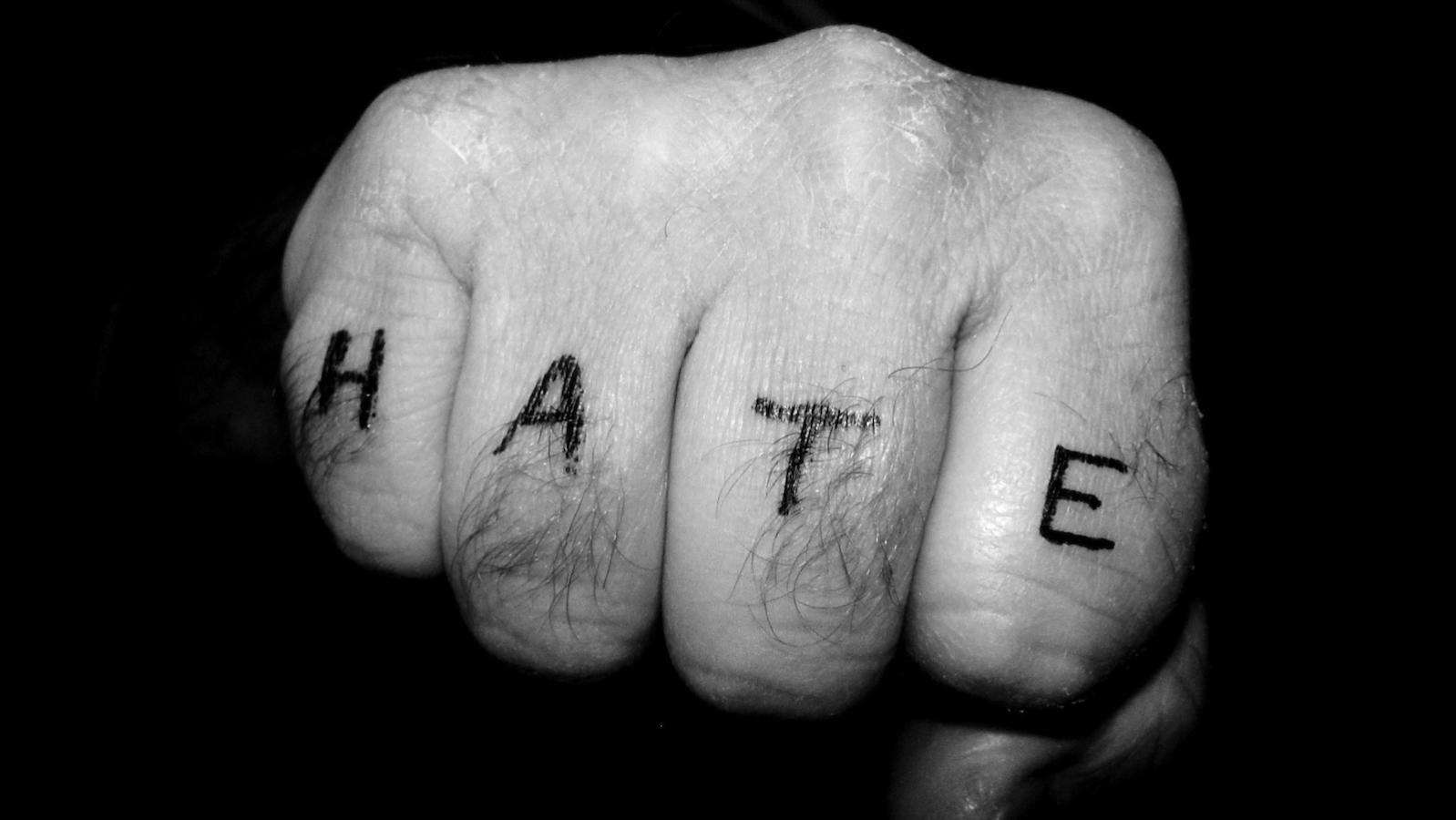I first met Carl after I had signed the lease on my rental in Old Town Brunswick. The 1880s Victorian was two stories and pale pink. But not as pink as my neighbor, Carl’s, hair which was firmly in the neon/hot hues. He was young, wiry and full of energy. His teeth were rotted but his smile was bright. His short sleeve shirt let show a wide array of colorful tattoos on his forearms suggesting more underneath. I introduced myself as we stood on the patch of grass between his house and mine. As we chatted, he gestured with his hand, and in a flash I saw a swastika. Etched in the flesh of his right hand on the hinge of skin between thumb and pointer finger, a line drawing inexpertly engraved.
I felt panicky and immediately exited the conversation unsure of what this meant to or for me.
My next encounter with Carl was on moving day. My dogs escaped the back yard. Carl found them, returned them, boarded the hole in my fence where they had escaped and called to tell me all was well. Swastikas plus kindness and generosity was not a combination I had expected. So, I became deeply curious about my new neighbor.
Over time we spoke often about neighborly things. He was very poor, constantly struggling to find work. He loved his dogs and his girlfriend with equal fierceness. When my porch light shorted and flickered, Carl came to my door, his cousin and baseball bat in tow, to make sure the flashing light was not a distress call.
One day Carl, his girlfriend and I struck up a conversation as I returned home from the coffee shop around the corner. I’d been working. What do you do, they asked? I took a very deep breath. I’m the rabbi, I replied. Everyone froze. The girlfriend stared at Carl’s hand tat. Carl stared at the ground. I did not breathe. There was, for a moment, no air. There was also, remarkably, no anger, outrage or confrontation. I was safe. They were safe. The conversation restarted. Life simply went on.
A few weeks later I mustered the courage to ask about the insignia on Carl’s hand. There were others on his chest. Larger, more colorful and impossible to ignore. He’d been in jail and the swastika was his prison gang’s seal. You had to be in a gang he explained. You were unsafe without one. He had been a lieutenant in that army and his chest swastika bore the double bars of the rank as if he were in the military. I was a lieutenant in the Navy and seeing the symbol that described me as well but with such different intent was disorienting. It’s not about hating anyone else he clarified with deep sincerity. It’s about feeling that being white is just better than anything else. I was startled by his innocent honesty and the lack of violence. I didn’t agree with him but understood better how he viewed the world.
I believe deeply in understanding and being in relationship with people who are different from you. But actually creating those relationships can be very challenging, especially when that which divides you is the currency of relational exchange. Carl and I created a friendship of sorts between a white supremacist and a rabbi based on dogs and neighborhood existence. Today, we live in a time of deep divides which need mending. The divisions between us threaten the essence of our humanity. Being human, after all, is about connection. Without connection we are lost and our connections these days seem threatened and strained.
We also live in a world of multiple truths, partial truths, and multiple realities. I have mine, and Carl has his. To claim that either one of us has the whole truth, and that the other one is objectively wrong, is patently absurd. In the words of Rabbi Irwin Kula, “we are unknown bits of unknown reality thereby leaving something open in ourselves and in the other for further experiencing and knowing.” This means if we want whole truth we need other people and the people to whom we are most in need of connecting are those who see the world and live their lives in fashions most different from our own.
At 7:30 am the following Sunday after Carl explained his prison swastika tattoos, there was a soft knock at my door. My daughter was under a year old and we’d been awake for some time. I looked out and saw Carl, hair it’s natural dark brown, wet and combed down with a side part. He was wearing a button-down shirt and an untied tie. I opened the door. “She wants to go to church! Do you know how to tie one of these dang things?” I assured him I did and as I stood on my front porch tying the necktie of a man covered in emblems that have meant murder, torture, and evil for millions of my own people, I could see Carl just as a man, gentle and sweet, trying to do right in this world for himself and the people around him. “Thank you, ma’am” and off he went to pray.


